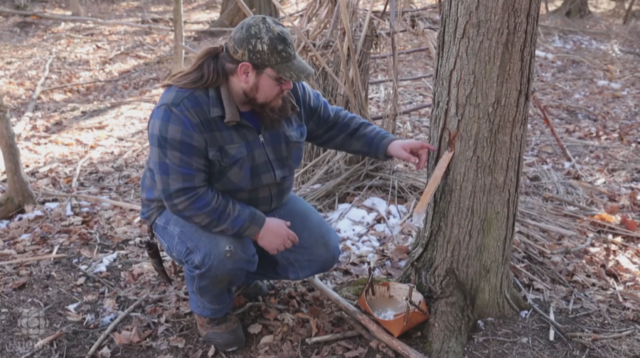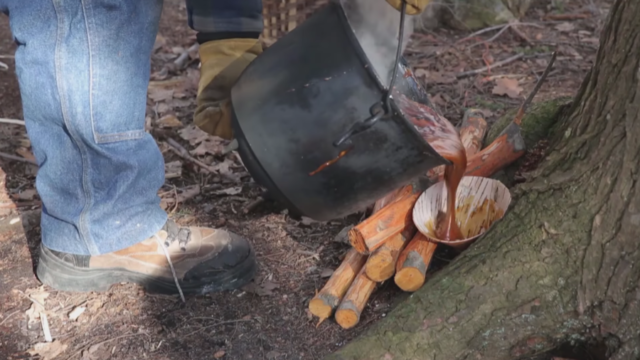The Anishinaabe peoples have made maple sugar, called ziinzibaakwad, for centuries. What is it and how is it traditionally made?
In this CBC News video, Caleb Musgrave from Hiawatha First Nation demonstrates how to gather and make maple sugar the traditional Anishinaabe way, from carving the cedar spile to tapping a good-size tree, to waiting for the sap to drip and then boiling it down.
Prior to the use of metal, hot stone boiling may have been used. The sap can be gathered from the sugar maple, the box elder (Manitoba maple), and other types of maple trees. In the video, Musgrave notes:
“Everybody just thinks about the sugar that comes out of this—the type of sucrose or glucose sugar that comes out of it—but there’s also all the vitamins, all the minerals, the nutritional fiber, and stuff that’s in that SAP that’s being concentrated, as well.”
Some background from The Great Lakes Research Alliance:
“Some Anishinaabeg call April Ziisbaakwadoke-giizis ‘sugar making moon’ others call it Namebine-giizis ‘sucker moon,’ but it depends where you are from. Different regions have some different names for the moons of the year. However, all across Anishinaabe-akiing (Indian country), the Anishinaabeg make syrup, sugar, taffy and candy from the sap of the maple tree…
“It is also likely that the maple sugar was used to sweeten drinks for more intimate get togethers. It is well known that the Anishinaabeg used to leave offerings at the graves of their loved ones. The little houses that were constructed over the grave had a hole in it to where one could place tobacco, tea and maple sugar. The early non-Native residents of Manitoulin noted this and thought it a waste and would often go and pillage the graves for the consumables. These items were left for the spirits of the dead as well as any visitors who could come and partake a smoke or a drink with the departed.
“Many museums have these small quill decorated makaks in their collections, and they still have the maple sugar in them.”
Find this birch bark box for maple sugar, with decorations made with dyed porcupine quill, in the British Museum’s collection.
Watch these sap, sugar, and First Nations videos next:
• How do trees survive winter?
• How Maple Syrup is Made | Où se trouve: Garland Sugar Shack
• Why do carrots taste sweeter in the winter?
• The word Indigenous, a CBC Kids News explainer
• My Father’s Tools and the Indigenous art of basket weaving
Plus: Chief Oshkosh and a history of Menominee Forest conservation.
Curated, kid-friendly, independently-published. Support this mission by becoming a sustaining member today.





